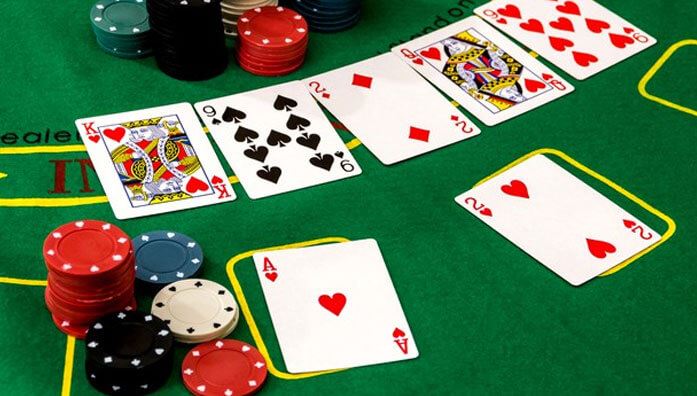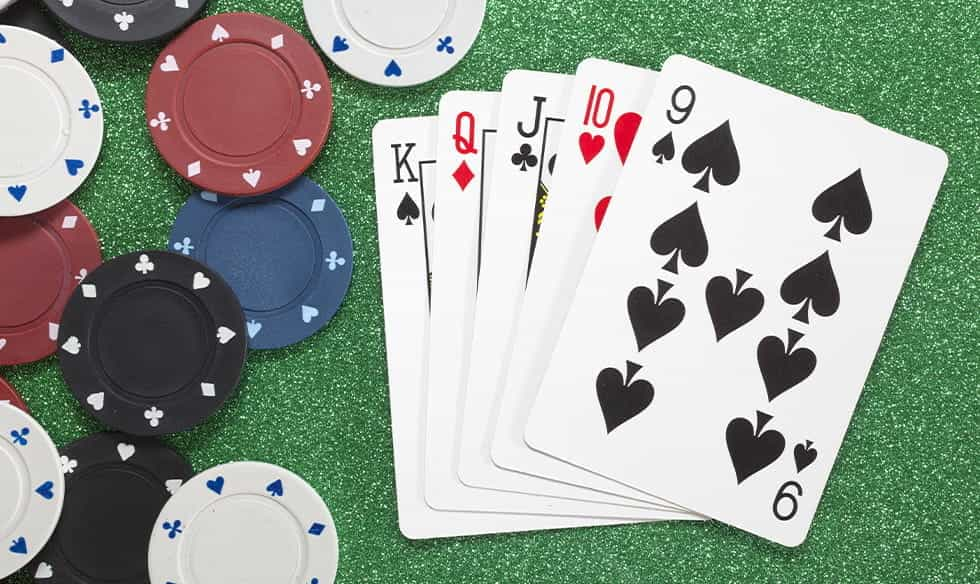What is a straight in poker? In the world of poker, hands are ranked according to their strength, and one of the most fundamental hands to understand is the straight. Poker, as a game of strategy and skill, involves mastering these hand rankings to outplay opponents and maximize winnings. A straight, which consists of five consecutive cards of any suit, is a powerful hand that can often secure a winning position in a round. For both beginners and experienced players, grasping the poker straight rules and knowing when and how to play a straight effectively is crucial.
What is a straight in poker?
What is a straight in poker? A straight in poker is a hand that consists of five consecutive cards of any suit. For example, a straight can be formed with the cards 5♠ 6♣ 7♦ 8♥ 9♠, where the suits do not matter as long as the sequence is maintained. This hand is ranked relatively high in poker because it demonstrates a good combination of skill and luck, often leading to a strong position in a game.
In the poker hand rankings, a straight is positioned above three of a kind but below a flush. This means that while a straight can often win a round, it can still be beaten by stronger hands like a flush, full house, or straight flush. The exact placement of a straight within the rankings highlights its potential as a powerful hand, especially when played strategically.
What is a straight in poker? One unique aspect of straights is how the ace card functions. The ace can be used in two different ways: as the lowest card in a sequence (A♠ 2♦ 3♣ 4♥ 5♠) or as the highest card (10♠ J♦ Q♣ K♥ A♠). This dual role of the ace adds a layer of complexity and opportunity when aiming to form a straight.
How do straights work in poker?
What is a straight in poker? Understanding how do straights work in poker is crucial for mastering the game. A straight is formed when a player holds five consecutive cards, regardless of suit, during a poker game. The formation of a straight typically involves using both hole cards (the private cards dealt to each player) and community cards (the shared cards dealt face-up on the table).

In games like Texas Hold’em, players use a combination of their two hole cards and the five community cards to create the best possible hand. A straight can be formed if the player has five sequential cards, such as 7♦ 8♠ 9♣ 10♥ J♦. The key to forming a straight is recognizing when the cards on the table align in a sequence that allows for this hand.
Two common types of straight draws can occur during a game: the open-ended straight draw and the gutshot straight draw. An open-ended straight draw occurs when a player has four consecutive cards and needs either end of the sequence to complete the straight. For example, if a player holds 6♠ 7♠ and the flop shows 8♦ 9♣, they would need a 5 or a 10 to complete the straight.
On the other hand, a gutshot straight draw, also known as an inside straight draw, occurs when a player needs one specific card in the middle of their sequence to complete the straight. For instance, if a player has 5♣ 7♦ and the flop shows 6♠ 9♥, they would need an 8 to fill the gap and complete their straight.
Different poker variants have specific rules about forming straights. In Omaha, for example, players must use exactly two of their four hole cards and three of the five community cards to make a straight. This rule adds complexity to the game, making it essential to strategize carefully.
A common mistake players make is overvaluing a straight in situations where the board shows potential for stronger hands, like flushes or full houses. Being aware of the broader context of the game, including the strength of opponents’ hands, is essential to avoid costly errors.
Strategies for playing straights in poker
What is a straight in poker? Understanding how does a straight work in poker is just the beginning; knowing when and how to play it effectively can significantly enhance your chances of winning. Straights can be powerful, but their value depends on the context of the game, making strategic play essential.
Aggressive vs. Cautious play
One of the key decisions when holding a straight is whether to play aggressively or cautiously. In general, an aggressive play is warranted when the straight is likely the best hand on the board. For example, if the community cards show a relatively dry board (e.g., no flush or full house potential), pushing hard with bets can force opponents with weaker hands to fold, allowing you to take down the pot uncontested.
However, caution is advisable when the board texture suggests the possibility of stronger hands, such as flushes or full houses. If the board shows three or more cards of the same suit or pairs, there is a risk that an opponent might have a stronger hand. In such cases, it might be wiser to check or make smaller bets, avoiding a significant loss if the opponent is holding a better hand.
Reading board textures
The ability to read the board’s texture is vital in determining the strength of your straight. On a coordinated board—where the cards are connected or suited—your straight might be more vulnerable to higher straights or flushes. For instance, if you have a straight, but the board also shows the possibility of a flush, proceed with caution. Assessing the potential hands your opponents could have is critical in deciding whether to play your straight aggressively or defensively.
Bluffing with straights
Bluffing can be an effective strategy when playing or drawing to a straight. For instance, if you hold an open-ended straight draw, semi-bluffing by betting can serve two purposes: it can make opponents with weaker hands fold, and if you hit your straight on the turn or river, you can potentially win a larger pot. However, bluffing should be used sparingly and with careful consideration of your opponents’ tendencies and the overall flow of the game.
Adapting to game stages and variants
The strength of a straight also varies depending on the stage of the game and the specific poker variant being played. In the early stages of a Texas Hold’em tournament, where players typically have larger chip stacks relative to the blinds, playing a straight aggressively can help build your stack. Conversely, in the later stages, when chip stacks are shorter, a more conservative approach may be necessary.
Common misconceptions about straights in poker
In the world of poker, there are several misconceptions about straights that can confuse both new and experienced players. One of the most common misunderstandings is confusing a straight with a straight flush. What is a straight in poker? A straight consists of five consecutive cards of any suit, whereas a straight flush requires all five cards to be of the same suit. This distinction is crucial, as a straight flush ranks significantly higher than a straight in the poker straight rules.

Another common misconception involves the concept of a “wraparound” straight, such as Q♠ K♦ A♠ 2♣ 3♥. Many players mistakenly believe this sequence forms a valid straight, but in reality, it does not. For a hand to qualify as a straight, all five cards must be in sequential order without any breaks or wrapping around the ace. The ace can either be the highest card (A♠ K♦ Q♠ J♣ 10♥) or the lowest (A♠ 2♦ 3♠ 4♣ 5♥), but it cannot act as a bridge between the high and low ends of the sequence.
Lastly, some players confuse the value of a straight with hands like flushes or full houses. While a straight is a strong hand, it is not as powerful as these other combinations. A flush, which consists of five cards of the same suit, and a full house, which includes three of a kind and a pair, both outrank a straight according to the standard poker straight rules. Understanding these distinctions is key to making informed decisions during the game.
The importance of mastering straights in poker
What is a straight in poker is fundamental for anyone looking to improve their game. A straight, consisting of five consecutive cards, is a powerful hand that can often lead to winning a pot, but its value depends on the context of the game. As we’ve explored, knowing how do straights work in poker—from their formation using community and hole cards to the strategic decisions surrounding them—is essential for any serious player.
Mastering the intricacies of straights, including when to play them aggressively or cautiously, can significantly elevate your poker skills. Whether you’re a beginner learning the ropes or an experienced player refining your strategy, consistently practicing how to identify and play straights will enhance your overall gameplay. Remember, the ability to effectively use straights in poker is not just about luck; it’s about understanding the rules, reading the board, and making informed decisions. By honing these skills, you’ll be better positioned to advance in poker games and increase your chances of success at the table.

